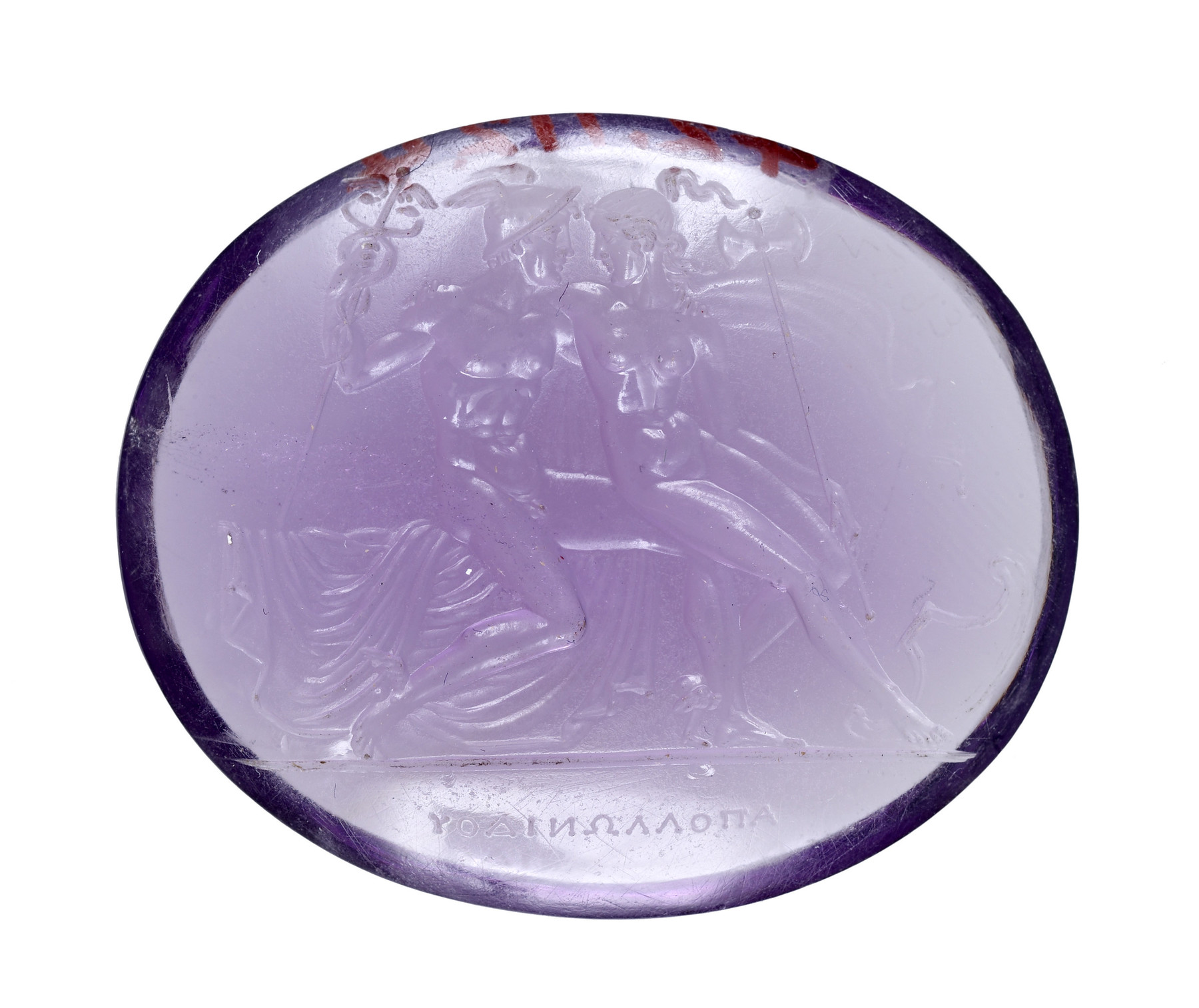Amethyst Intaglio of Hermes and Herse
(18th and 19th Centuries )
The Greek god Hermes, identified by his "caduceus" (staff) and winged helmet, is seated next to Herse, the beautiful daughter of King Cecrops of Athens. Although dating from the 18th century, this intaglio is inscribed in Greek with the name "Appollonides," an ancient gem engraver cited in Pliny's "Natural History."
Inscription
Provenance
Provenance (from the French provenir, 'to come from/forth') is the chronology of the ownership, custody, or location of a historical object. Learn more about provenance at the Walters.
Collection of Prince Stanislas Poniatowski (1763-1833). Sale, Christie's, London, April 29-May 21, 1839, Lot 2409. Henry Walters, New York; inherited by Sadie Jones (Mrs. Henry Walters), New York, 1931; purchased by Joseph Brummer, New York, 1941 (?); purchased by Walters Art Museum, 1942.
Conservation
| Date | Description | Narrative |
|---|---|---|
| 9/9/1963 | Treatment | cleaned |
Geographies
Italy (Place of Origin)
Measurements
H: 1 1/16 x W: 1 1/4 in. (2.7 x 3.2 cm)
Credit Line
Museum purchase (formerly in the collection of Mrs. Henry Walters), 1942
Accession Number
In libraries, galleries, museums, and archives, an accession number is a unique identifier assigned to each object in the collection.
In libraries, galleries, museums, and archives, an accession number is a unique identifier assigned to each object in the collection.
42.1124


